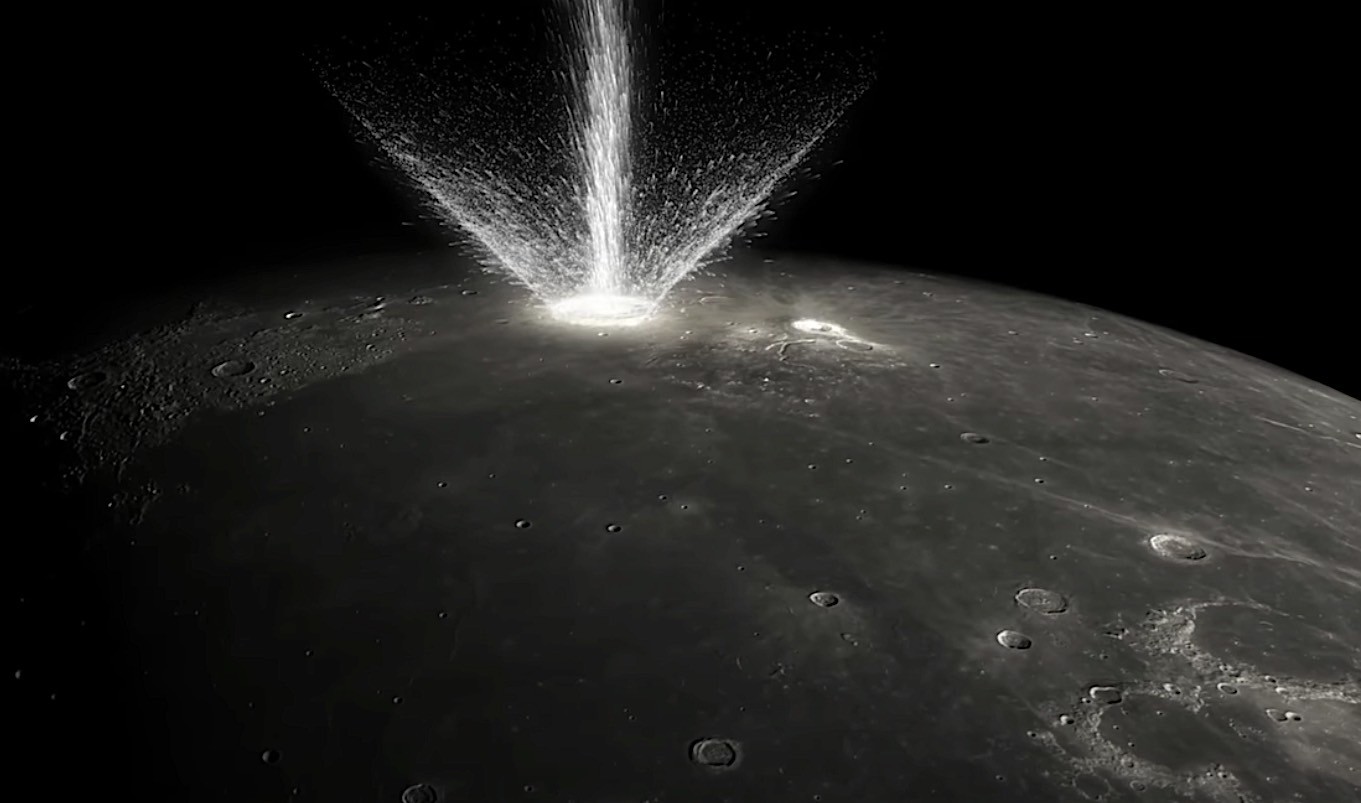NASA is preparing to send an expedition of astronauts to the Moon by 2025 as part of the Artemis mission. The space agency plans to create a habitable base on its surface. Therefore, it is important for scientists and engineers to understand the frequency with which meteorites fall on the Moon.

When NASA sent humans to the Moon in 1969, one of the many hazards was the risk of space rocks getting into astronauts’ spacesuits or equipment. The Earth protects all living from meteoroids (small space rocks) with a dense atmosphere – they burn up at an altitude of 85 km and leave behind beautiful meteor trails in the sky. The Moon, devoid of atmosphere, is vulnerable to any rocks or even specks of dust flying in space.
Fortunately, the astronauts avoided such a danger. That’s because the probability of a small rock hitting a man on the Moon is 1:1,000,000, according to Bill Cooke, head of NASA’s Meteoroid Environment Office at NASA’s Marshall Space Flight Center in Alabama. At the same time, the minimum dimensions of a dangerous space fragment capable of piercing a spacesuit are 1 mm.
How many objects fall on the Moon every day?
The answer depends on the size of the object, Cooke says. NASA is studying the space environment around the Earth and the Moon to determine the flow of meteor bodies. The danger is both cosmic specks of dust and small asteroids about 1 meter across. Therefore, Cooke is well acquainted with what hits the Earth and the Moon every day. The number of specks of dust less than a millimeter in size cannot be accurately determined. Cooke estimates that 10 to 1,000 tons of dust— the mass of five cars—falls on the Moon every day. For larger rocks, the estimates are clearer.
“There are about 100 ping pong-ball-sized meteoroids hitting the Moon per day,” Cooke said. Despite its small size, each of these ping pong ball-sized rocks hits the surface with a force of 3.2 kg of dynamite.
Larger meteorites also fall on the Moon, but less often. For example, rocks 2.5 meters across hit the Moon about every four years. During the collision, an explosion of 900 tons occurs in the TNT equivalent. All because of the huge kinetic energy: meteorites and meteoroids fly at speeds from 20 to 72 km/s, the impact produces a powerful flash of light that can be observed from Earth. According to NASA, due to the fact that meteoroids move so fast, even a 5-kilogram meteorite can leave behind a crater with a diameter of 10 meters and throw 75 tons of lunar soil and rocks from the surface of the Moon. The Moon is about 4.5 billion years old, so it’s not surprising that its surface is dotted with all sorts of craters from these impacts.
Minimal Risk
Despite the frequent falls of various meteoroids on the Moon, the risk of hitting a person is extremely low. The surface area of the Moon is about 38 million m2, then the fall of meteoroids the size of ping pong on a plot of 1 m2 will occur approximately once per thousand years.
Recall that earlier we talked about the TOP 3 dangers of landing on the Moon.
According to Space.com

